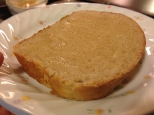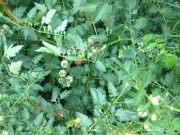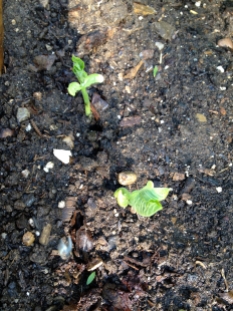I was born in Trinidad and Tobago, in the Caribbean. My mother immigrated to the U.S. when I was about five or six years old. My mother left my brother and I behind for two years to find us a better life. She was running away from poverty and abuse. Not a week would go by that I would not hear from my mother. As a father, I can now fully appreciate how much of a sacrifice that was for her.
One day, in 1992, my mother reappeared. I did not know if she was real. In the life of an eight-year-old, two years was a very long period of time and I had dreamt or thought of this reunion almost every night. A few weeks later, we were landing at JFK airport and heading to our new home in Crown Heights, Brooklyn.
We drove under a massive building complex on Bedford Avenue called Ebbets Field. It was the first time that I would take an elevator. It would be the beginning of many firsts. First winter. First snow. First subway ride. My mother was a nanny, like many women who came from my country and had to work long hours. However, she knew that she would have to keep my brother and I by her side during those early years. That fall she enrolled us at P.S. 151 on the Upper East Side. We would get up at 6am, be on the train by 6:45am and in school before all of the other children. I enjoyed the free school breakfast, while my brother and I waited for our first homeroom. In the afternoons we would wait in the lobby of these opulent Upper East Side buildings, waiting for my mother to get off from work.
Years later, I would be identified by my elementary school guidance counselor and teachers as a candidate for skipping a grade. However, in 1992, elementary schools went up to 6th grade and I was already in the 5th. My guidance counselor knew of a school downtown, called the NYC Lab School and thought that I would be a good candidate for admissions. The grades began in 6th and ran all the way to the 12th. Some months later, I interviewed and was accepted into this new school. I connect with When They Call You a Terrorist: A Black Lives Matter Memoir by Patrisse Khan-Cullors and Asha Bandele in this experience of having to navigate these white spaces and to code switch. When I started school the next fall, I had to adjust to the change in academic expectations from my elementary school. I was a star pupil at P.S. 151, but at Lab, I also was feeling like my stardust too was running out. Similarly, I had the same experiences when bringing home some of my school friends to hangout and showing them where I lived.
While attending the Lab school, I was on my way home with some friends. We got on the A train headed downtown from West 14th Street. In-between the 14th and West 4th street stations, we were mugged by a group of older kids. When we got off of the train, we found a police officer and reported what happened. I was the only person that was Black in the group. We were asked to head downtown to Fulton Street, there was a police station within the subway station. After hours of taking all of our statements, contacting our parents, we were asked where we all lived. We were separated into groups by boroughs and two police officers would escort each group home. My group was heading to Brooklyn. We all were asked for our addresses. Then, we all got in the back of the squad car. The two friends of mine headed to Brooklyn, lived in Park Slope. We drove through Brooklyn—us rehashing the events of the day and the two cops engaging in some indistinct chatter. It was not until they dropped off the last of the two Park Slope kids that they looked back and spoke to me. They asked, “I hope you don’t live in some projects. I really am not in the mood to deal with that.” I was so taken aback and made to feel so deeply ashamed that I lied and said, “No.” The next twenty minutes or so that it took to drive to my home in the Ebbets Field housing projects was filled with dread. I started thinking up excuses for them to drop me off a few blocks away. But, they had orders to drop me directly home. The car pulled up to my building. I heard one of them sigh in the front seat, I grabbed my backpack, opened the door and just said, “this way.” We got on the elevator, that same elevator that thrilled me years before. Washing away all of the hard work, sacrifice and effort that my mother put in to get us to this better place. But, in a single moment I was made to feel embarrassed about where my family lived. That was my first direct experience with law enforcement and racism. It has seared itself into my memory and I have never forgotten that moment since.
As a higher education administrator, providing access to education through financial aid has been an unintended career path, but not a mistake. I think this moment and moments like these that have followed, have shaped me in being critically aware that we are not all afforded the same privilege.



































































































